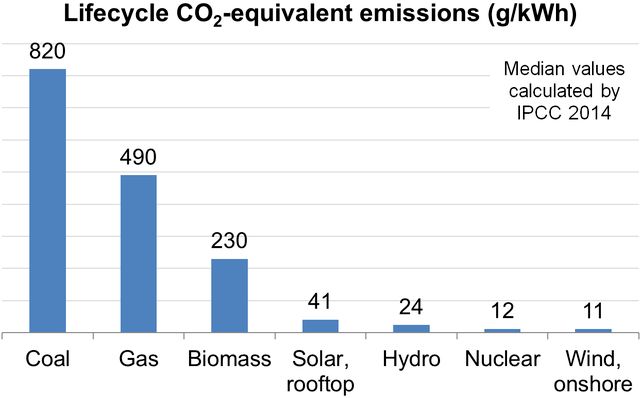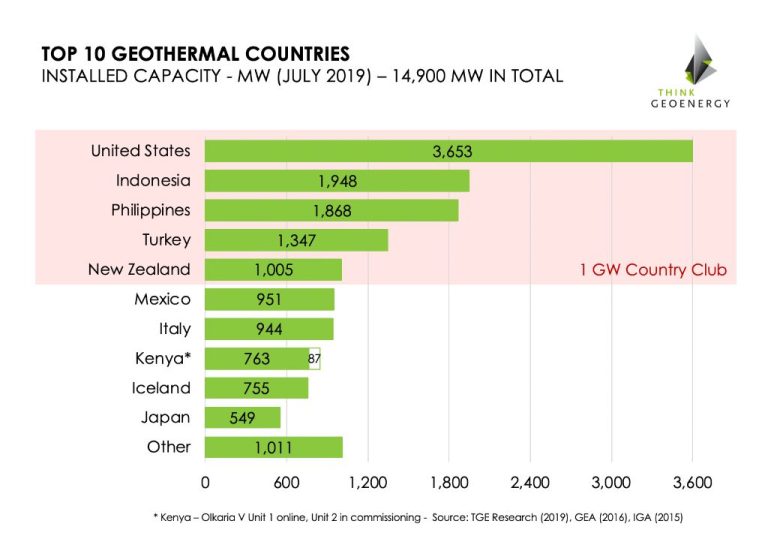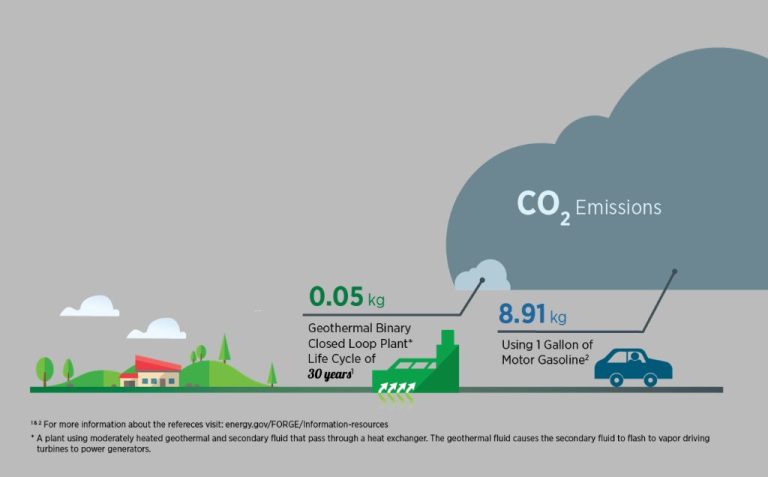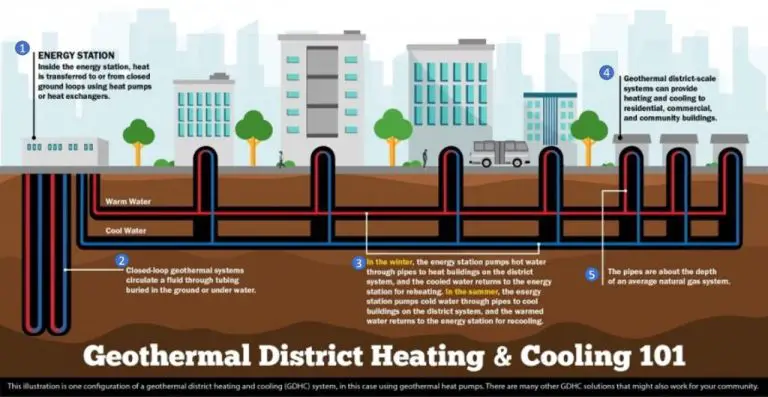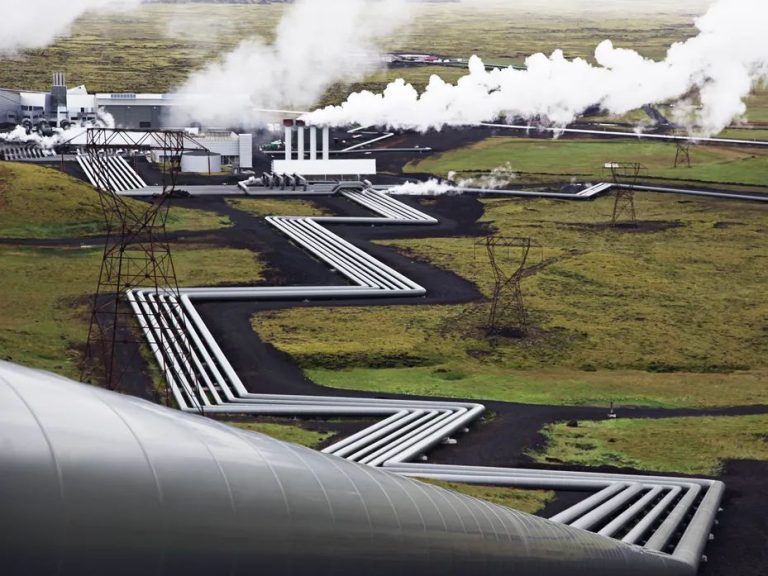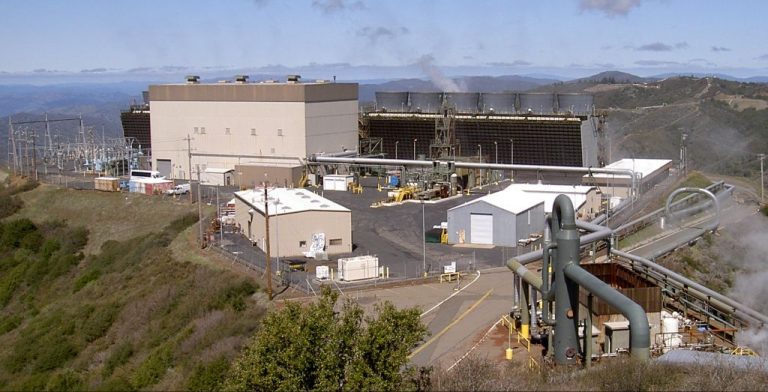What Type Of Potential Energy Is Geothermal Energy?
What is Geothermal Energy?
Geothermal energy is heat energy generated and stored inside the Earth (EIA, 2022). It comes from the Greek words geo (earth) and therme (heat). Geothermal energy is a renewable energy source that utilizes the natural heat produced inside the Earth’s core to generate electricity and provide heating and cooling (TWI, 2022).
Unlike fossil fuels like coal, oil and natural gas that are burned to produce energy, geothermal energy taps into underground reservoirs of hot water and steam to create energy. These geothermal reservoirs are located in naturally occurring hot spots like geysers and volcanoes. Wells and piping systems are built to bring the heated underground water to the surface to produce electricity or provide direct heating (Energy.gov, 2022).
The key difference between geothermal energy and fossil fuels is that geothermal energy is considered renewable since heat is continuously produced inside the Earth. Fossil fuels are non-renewable resources that can be depleted over time. Geothermal energy has a smaller carbon footprint than burning fossil fuels since no combustion is involved in utilizing the Earth’s natural heat.
How Does Geothermal Energy Work?
Geothermal energy utilizes heat from the Earth’s interior to generate electricity and provide heating. This heat travels outward from the molten core through the different layers of rock and water underground. Wells and pumps are then used to bring hot water or steam to the surface, where the heat is converted into electricity at geothermal power plants or used for heating directly.
Specifically, as hot magma naturally flows outward from the Earth’s core, it heats up nearby rock. Water seeps deep underground, where it is heated by this hot rock and stored in cracks and pores in the rock or underground reservoirs. Wells are drilled 1-2 miles deep in order to tap into these naturally heated water sources. Pumps then bring this heated water or steam back up to the surface.
At geothermal power plants, the steam is used to drive turbines connected to electricity generators. The already heated water can also be piped directly into buildings and homes for heating purposes. After the heat is used, the cooled water is injected back into the geothermal reservoir to be reheated again. This creates a sustainable cycle that allows continual harnessing of the Earth’s internal heat.
Overall, geothermal energy relies on subterranean heat traveling slowly from the Earth’s molten core through rock layers and water. Wells and pumps enable people to access this natural underground heat energy at the surface for electricity generation and heating. (https://www.energy.gov/eere/geothermal/electricity-generation; https://www.ucsusa.org/resources/how-geothermal-energy-works)
Types of Geothermal Energy Systems
There are several main types of geothermal energy systems that are used to harness the heat energy from the Earth:
Geothermal Power Plants
Geothermal power plants use the heat from geothermal reservoirs to produce steam to drive turbines and generate electricity. There are three main types of geothermal power plants:
- Dry steam plants that use steam from a geothermal reservoir to directly drive turbine generators.
- Flash steam plants that pull deep, high-pressure hot water into lower pressure tanks and use the resulting flashed steam to drive turbines.
- Binary cycle plants that pass hydrothermal fluids through heat exchangers to heat a secondary fluid, which boils at a lower temperature than water. This secondary fluid vapor drives the turbines.
In the United States, most geothermal power plants are located in the western states, where geothermal reservoirs are more common [1]. The Geysers in northern California is the largest geothermal power plant complex in the world.
Geothermal Heating/Cooling Systems
Geothermal heating and cooling uses geothermal heat pumps to control temperatures in buildings and other facilities. This technology uses shallow ground warmth in winter and coolness in summer to provide heating and air conditioning.
Geothermal heat pumps circulate water or an anti-freeze solution through pipes buried in the shallow ground near a building. In the winter, the fluid collects heat from the Earth and carries it indoors. The indoor heat exchanger releases heat into the air while the fluid cools. In the summer, the system is reversed, pulling heat from the indoor air and transferring it outside [2].
Geothermal Heat Pumps
Geothermal heat pumps are used for space heating and cooling. They use the constant temperatures near the surface of the Earth to transfer heat to and from buildings. In the winter, heat is extracted from the ground and pumped indoors. In the summer, heat is removed from indoors and transferred into the ground.
Ground source heat pumps are among the most efficient heating and cooling technologies available today. They can reduce energy consumption for heating by 30-60% compared to conventional systems [3].
Direct Use of Geothermal Energy
Geothermal energy can be used directly for various applications such as heating buildings, growing plants in greenhouses, drying crops, heating water at fish farms, and several industrial processes. Hot springs and other geothermal resources provide warm bathing facilities throughout the world.
Direct use of geothermal energy dates back thousands of years. Today, many hot springs are still used for bathing, and many cities pipe hot spring water under roads and sidewalks to melt snow.
Benefits of Geothermal Energy
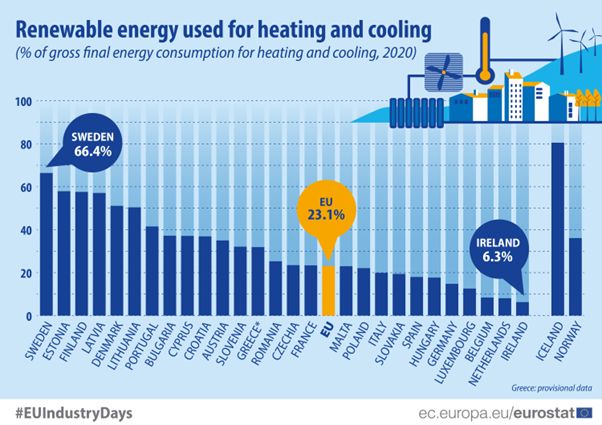
Geothermal energy provides numerous environmental and economic benefits as a renewable and sustainable energy source.[0] The main benefits of geothermal energy are:
Renewable and sustainable: Geothermal energy is considered renewable since heat is continuously produced inside the earth.[1] The amount of heat within the earth is essentially limitless, making geothermal a sustainable long-term energy solution.[2]
Reduces fossil fuel use: Using geothermal energy can offset the use of fossil fuels like coal, oil, and natural gas for electricity generation and heating.[3] This supports energy independence and security.
Lower greenhouse gas emissions: Geothermal power plants release little to no greenhouse gases because no combustion occurs.[4] This helps mitigate climate change and reduces air pollution.
Available 24/7: Geothermal plants provide continuous baseload power unlike solar or wind energy.[5] The constant heat source means geothermal energy can supply electricity uninterrupted.
Long lifespan: Geothermal power facilities can operate for decades with proper maintenance. The average geothermal plant has a lifespan of 20-30 years.[6]
[0] https://www.enelgreenpower.com/learning-hub/renewable-energies/geothermal-energy/advantages
[1] https://www.energy.gov/eere/geothermal/geothermal-faqs
[2] https://www.energy.gov/eere/geothermal/geothermal-faqs
[3] https://www.energy.gov/eere/geothermal/geothermal-faqs
[4] https://www.energy.gov/eere/geothermal/geothermal-faqs
[5] https://www.enelgreenpower.com/learning-hub/renewable-energies/geothermal-energy/advantages
[6] https://www.energy.gov/eere/geothermal/geothermal-faqs
Limitations of Geothermal Energy
While geothermal energy has several advantages, it also comes with some limitations:
High upfront costs
Developing geothermal power plants requires significant upfront investments. Drilling exploratory wells and constructing the power plant infrastructure can be expensive. The development costs are estimated between $2-5 million per megawatt of capacity.
Limited to geographical locations
Geothermal energy sources are limited to areas with accessible geothermal reservoirs and optimal underground temperatures. Sources need to be located near tectonic plate boundaries, hot spots, or magma chambers beneath the earth’s surface. This restricts widespread adoption.
Potential environmental impacts
While geothermal energy itself is clean and sustainable, developing it can disrupt natural hot springs and geysers if not managed properly. There is also a risk of releasing greenhouse gases trapped underground. Proper environmental regulations need to be enforced.
Exploratory drilling risks
Drilling exploratory wells involves substantial financial risk, as there is no guarantee of finding a productive geothermal resource. Unpredictable subsurface conditions could mean abandoned projects and wasted investments if no viable reservoir is found.
Global Use of Geothermal Energy
Geothermal energy is utilized in over 80 countries around the world. Some of the leading countries using geothermal power include:
Iceland generates the most geothermal electricity per capita in the world, meeting around 30% of its electricity demand from geothermal sources. With abundant geothermal resources, over 90% of Iceland’s heating comes from geothermal energy. (Use of geothermal energy)
The United States generates the most total geothermal electricity in the world, with over 3,800 MW of installed geothermal capacity as of 2021. California leads geothermal development in the US, providing over 5% of the state’s total electricity generation. ( Global geothermal market and technology assessment)
Indonesia has significant untapped geothermal potential, estimated at over 28 GWe. As the world’s third largest geothermal electricity producer, Indonesia aims to reach 7.2 GWe of geothermal capacity by 2025. Direct use applications are also widespread for heating homes and greenhouses, aquaculture, and more. (Geothermal energy)
Global geothermal power capacity is projected to grow substantially, potentially reaching almost 60 GWe by 2030 and over 160 GWe by 2050 according to IRENA estimates. Significant growth is expected across direct heating applications as well. With increasing policy support and technological advances, the global geothermal market outlook remains promising. ( Global geothermal market and technology assessment)
Geothermal Energy in the US
The United States leads the world in geothermal electricity generation. In 2022, the United States had geothermal power plants in seven states, which produced about 17 billion kilowatthours, making up 0.4% of total utility-scale electricity generation.[1]
With 3,676 MW of installed geothermal capacity as of 2019, the US remains the world leader with about 25% of the online capacity total.[2]
The western states of California, Nevada, Utah, and Hawaii accounted for over 90% of geothermal electricity generation in the United States in 2021. California produces the most geothermal electricity, with nearly 40 geothermal power plants generating over 12 billion kilowatthours in 2021, over two-thirds of the national total.[3]
There are federal and state level incentives and policies to support geothermal development, including tax credits, grants, rebates, and renewable portfolio standards. Key federal incentives include the Renewable Electricity Production Tax Credit (PTC) and accelerated depreciation for geothermal projects.[4]
Developing Geothermal Resources
Finding and developing geothermal resources involves several key steps:
Exploration involves identifying potential reservoirs by measuring surface heat flow, geology, and geochemistry (https://www.energy.gov/eere/geothermal/geothermal-basics). Geophysical surveys and temperature gradient drilling may be used to map resources underground.
Drilling production wells involves accessing the geothermal reservoir and extracting the hot fluid. Improvements in directional drilling allow multiple wells to be drilled from one pad, reducing surface disturbance (https://www.blm.gov/programs/energy-and-minerals/renewable-energy/geothermal-energy).
Enhanced geothermal systems (EGS) are engineered reservoirs created by pumping water into hot dry rock to produce geothermal resources where there is hot rock but insufficient water and permeability. EGS has the potential to greatly expand geothermal energy production (https://www.doi.gov/ocl/geothermal-energy-development).
The Future of Geothermal
While geothermal energy has many benefits, it also faces some limitations in terms of suitable locations and high upfront costs. However, new innovations and hybrid systems may help geothermal overcome these barriers and expand its use globally.
One way geothermal can overcome location limitations is through enhanced geothermal systems (EGS) that create reservoirs in areas without natural ones. Drilling deep wells into hot, dry rock and pumping water allows fracturing to form an artificial reservoir (MIT). EGS could unlock geothermal potential across more regions. Additionally, hybrid renewable systems combining geothermal with solar, wind, or biomass energy are gaining interest. The constant base load of geothermal can complement intermittent sources like solar and wind to provide steady, reliable energy (Yale Environment 360).
If technical barriers are overcome, geothermal has the potential to meet a significant portion of the world’s electricity demands according to experts. Installed global geothermal capacity could grow over 26-fold by 2050, meeting 3.5% of forecast electricity use (NREL). With continued innovation and declining costs, geothermal seems poised to play an expanding role in renewable energy systems.
Summary
In this article, we discussed the basics of geothermal energy and how it works as a source of renewable power. Geothermal energy taps into the natural heat within the earth and uses it to generate electricity and provide heating and cooling.
There are different types of geothermal energy systems, including geothermal power plants, direct use and heating applications, and geothermal heat pumps. Each has its own methods of harnessing geothermal energy. We covered the main benefits, like its renewability, reliability, and sustainability, as well as limitations like high upfront costs and geographical requirements.
Globally, geothermal energy provides a small but growing share of renewable power generation. The countries leading in geothermal use were highlighted. The U.S. has robust geothermal resources, but growth has slowed in recent years. New technologies and techniques may allow expanded access to geothermal reservoirs and resources.
Overall, geothermal offers a clean, renewable energy source that provides consistent baseload power. As countries work to transition their energy grids to low-carbon sources, geothermal can provide an important element in the renewable energy mix. Its unique advantages make it a valuable complement to intermittent resources like wind and solar. With further development, geothermal has the potential to play an even greater role in a sustainable energy future.

